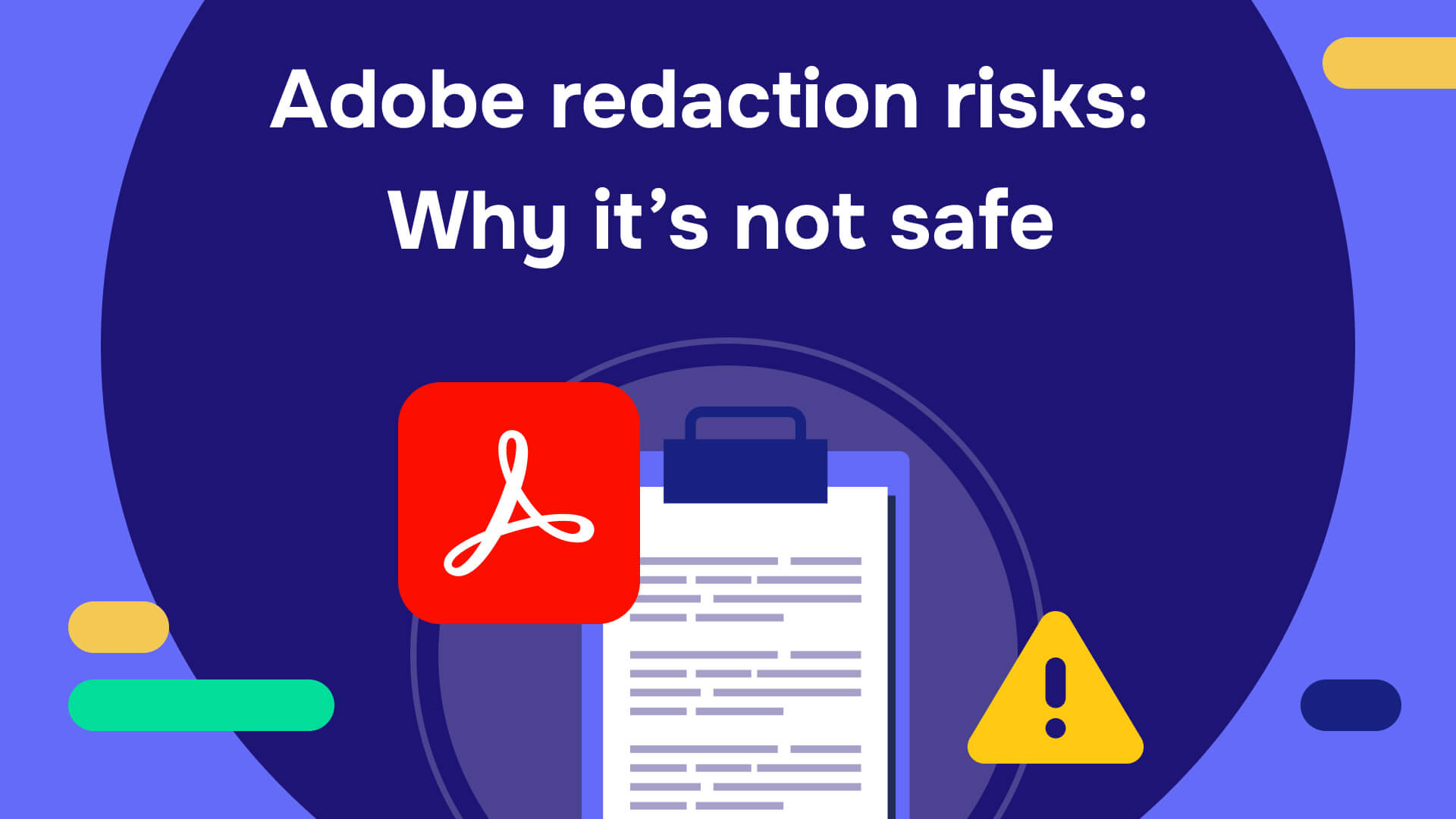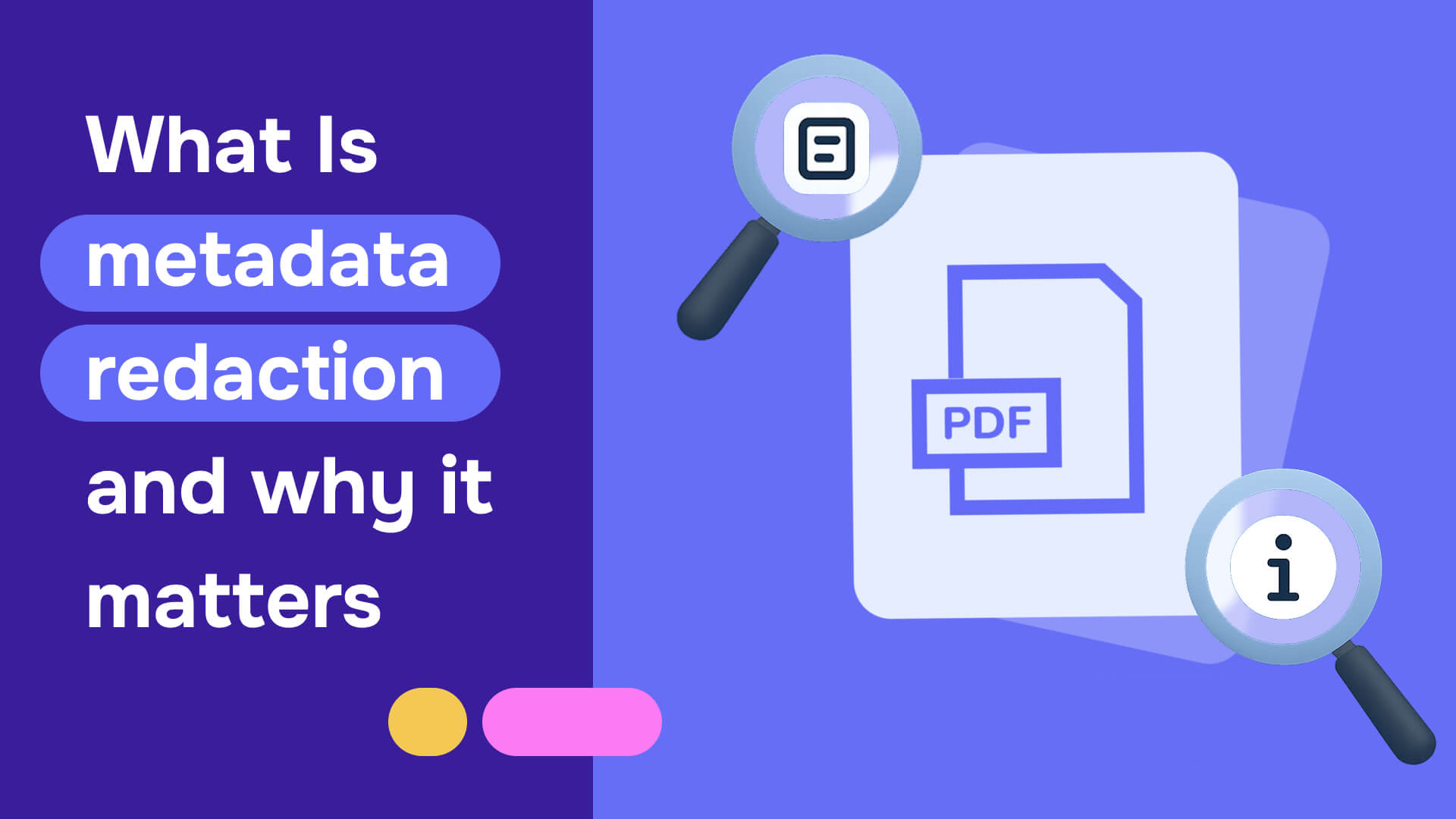The rise of artificial intelligence in healthcare has unlocked unprecedented opportunities. Hospitals, research labs, and digital health startups are leveraging medical data to predict disease outcomes, improve diagnostics, and personalize treatment. But the same data driving innovation also represents one of the most sensitive assets in existence: protected health information (PHI).
In an era where patient trust, regulatory scrutiny, and cybersecurity threats intersect, the ability to share medical records responsibly has become a strategic differentiator. At the heart of that capability lies one critical process: redaction. More than a compliance checkbox, redaction is the foundation of ethical data sharing and AI development in healthcare.
This article explores how medical record redaction powers privacy‑safe innovation — from HIPAA‑compliant data exchange to the preparation of training data for medical AI - and how Redactable’s automation-first approach is redefining this crucial practice.
What redaction really means in healthcare
Redaction is the deliberate removal or masking of sensitive data elements from medical documents, datasets, and imagery. In healthcare, it extends beyond simple black boxes on a PDF — encompassing metadata, embedded identifiers, timestamps, and even burned‑in text within diagnostic imaging.
While often used interchangeably with de‑identification or anonymization, redaction plays a distinct role. It is the tactical process of stripping or obfuscating identifiers, often within a broader privacy framework. True anonymization might render a dataset permanently unlinkable to individuals, but redaction enables selective privacy — removing what’s not needed while keeping the clinical context intact for legitimate use.
The expanding urgency for redaction in medical record sharing
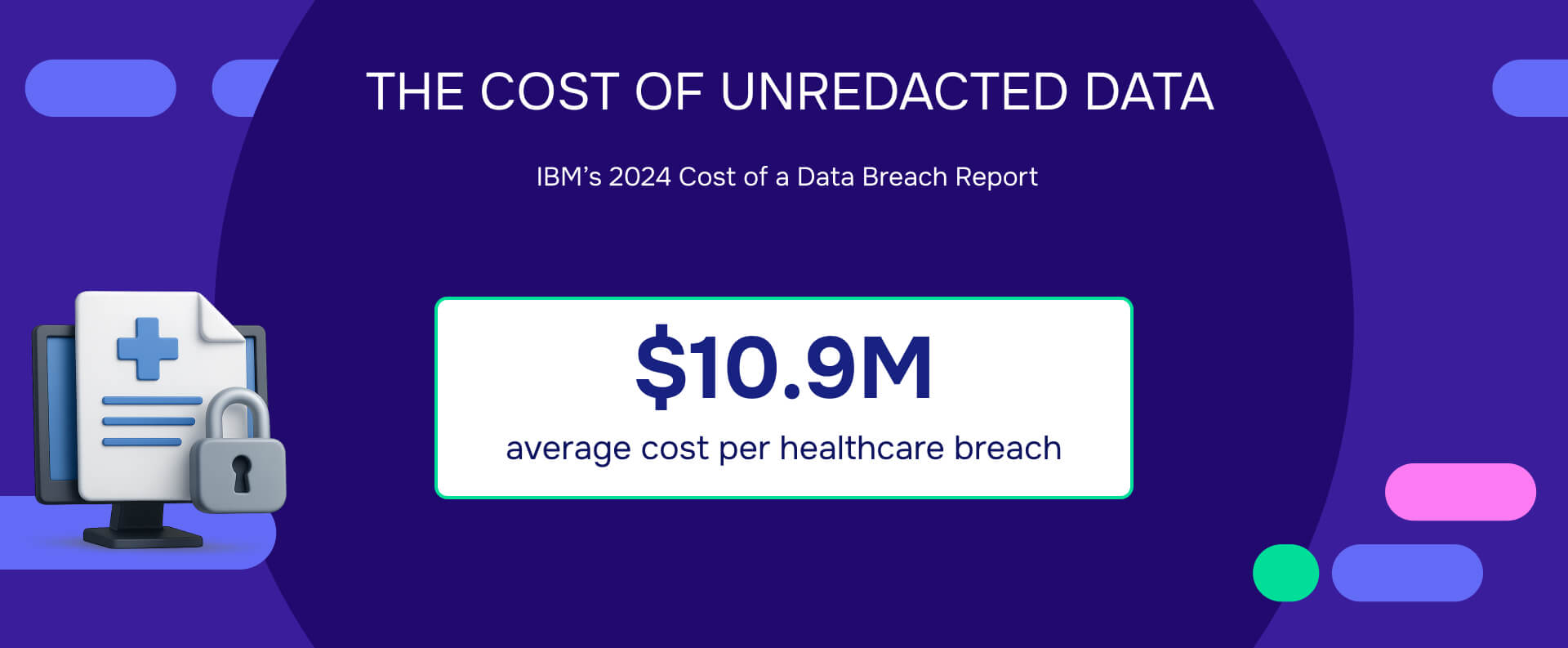
Data sharing has become a lifeline for modern healthcare. Health Information Exchanges (HIEs), research collaborations, and cross‑provider networks all depend on seamless, compliant data flow. Yet, breaches of PHI remain among the most costly compliance failures. According to IBM’s 2024 Cost of a Data Breach Report, healthcare breaches averaged $10.9 million per incident - the highest of any industry.
Every transmission, export, or upload of a medical document carries potential exposure risk. Manual redaction workflows, still common in hospitals, are error‑prone and time‑intensive. According to the reports, while malicious actors committed 55% of all healthcare breaches, 45% stemmed from IT failure or human error—the exact vulnerabilities manual redaction introduces. Redactable's AI‑driven redaction system addresses this by automating PHI detection and removal across text, tables, metadata, and even images - achieving both scale and precision while maintaining auditability.
Effective redaction ensures compliance with HIPAA in the U.S. and GDPR in Europe while preserving trust with patients and research partners. It’s not just a legal safeguard - it’s a strategic enabler for innovation.
Redaction as the bridge between privacy and AI progress
The medical AI revolution depends on access to large, diverse, and accurate datasets. But raw clinical records are rife with identifiers - patient names, medical record numbers, device IDs, and timestamps - that render them non‑compliant. AI training data without redaction is a liability waiting to happen.
Here’s where intelligent redaction becomes transformative. By applying contextual natural language processing (NLP) and pattern‑recognition models, Redactable identifies PHI across structured and unstructured data. This enables researchers to use high‑fidelity, de‑identified data that still preserves the semantic and temporal patterns crucial for model accuracy.
In radiology, for example, automated redaction can scrub DICOM headers and detect burned‑in names or IDs on scans. In clinical NLP, it can mask identifiers within free‑text notes without disrupting the narrative flow. These capabilities let healthcare innovators train AI safely, ensuring models learn from insights - not identities.
Common pitfalls in medical data redaction
- Under‑redaction: Missing PHI elements like hidden metadata, patient initials, or embedded comments.
- Over‑redaction: Removing too much context, weakening the dataset’s analytical or AI training value.
- Inconsistent methods: Mixing manual and automated steps without standardization or audit trails.
- Neglecting non‑text PHI: Forgetting image overlays, audio annotations, or video transcriptions.
- Improper validation: Lacking QA sampling or independent verification of redaction accuracy.
Redactable mitigates these pitfalls by integrating automated verification, audit logs, and role‑based review workflows. This ensures a defensible, repeatable process aligned with regulatory expectations.
Building a scalable redaction workflow
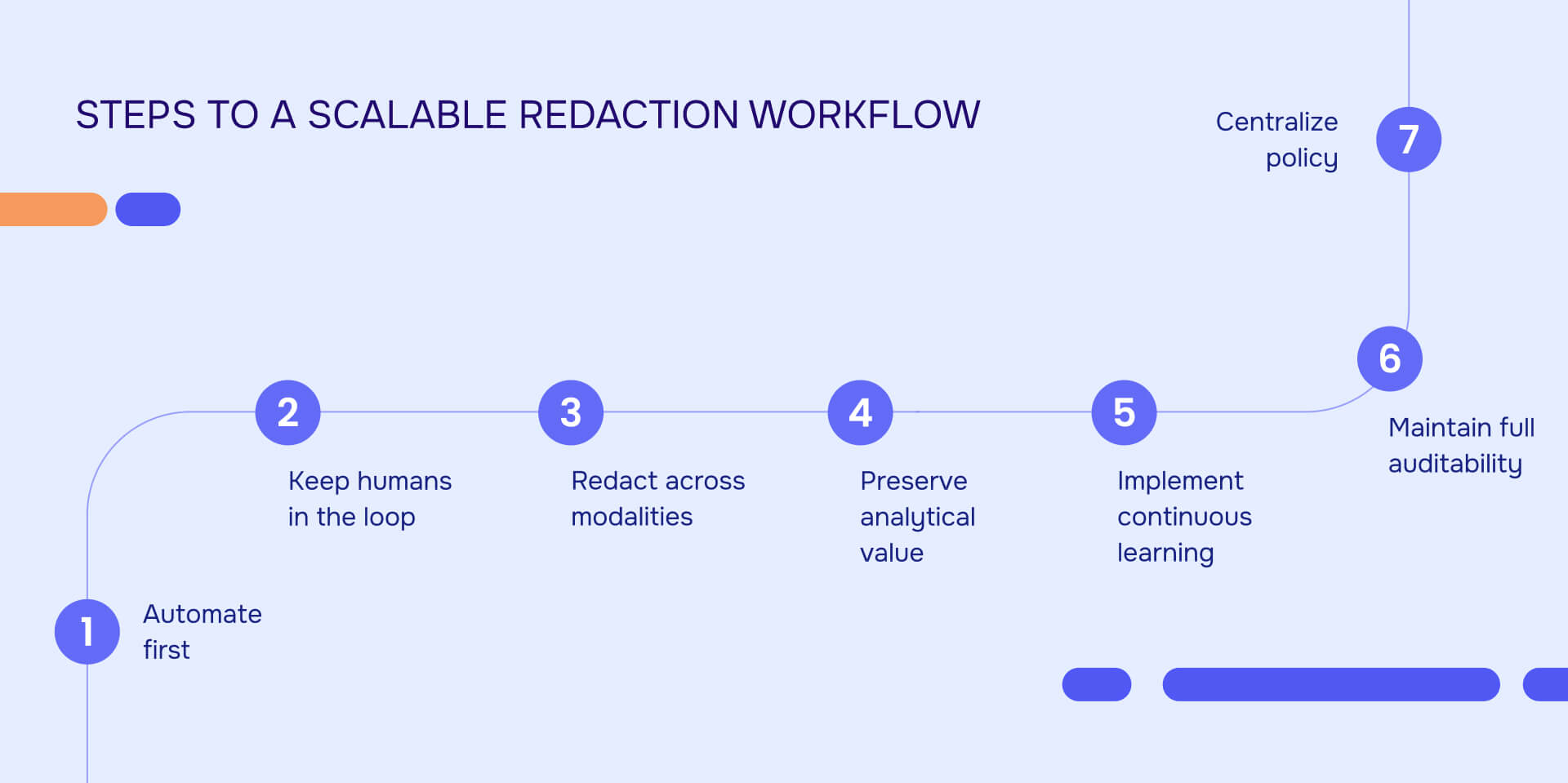
A future‑ready healthcare organization treats redaction as an integral layer of its data governance architecture. Best practices include:
- Automate first: Deploy AI‑assisted redaction to handle volume and reduce human error.
- Keep humans in the loop: Maintain expert review for edge cases or ambiguous entities.
- Redact across modalities: Address text, image, audio, and metadata holistically.
- Preserve analytical value: Replace sensitive fields with pseudonyms or date offsets when possible.
- Implement continuous learning: Retrain redaction models with new identifiers and evolving templates.
- Maintain full auditability: Log every redaction event, reviewer action, and export version.
- Centralize policy: Create consistent PHI definitions and role‑based permissions across teams. Make sure they align with the official definitions.
Redactable’s platform operationalizes these principles through a secure SaaS environment with granular permissions, searchable audit logs, and customizable exclusion lists that preserve clinically relevant details while ensuring compliance.
Redaction, compliance, and competitive advantage
Beyond compliance, proactive redaction creates measurable business impact. Healthcare organizations that embed privacy‑preserving workflows unlock faster research collaboration, reduced breach risk, and improved patient trust. Industry analysts, regulators and privacy experts increasingly recognize data governance maturity — including automated redaction - as a marker of operational excellence, even as formal regulatory benchmarks continue to evolve.
By automating what was once a manual bottleneck, Redactable enables enterprises to transform compliance from a cost center into a catalyst for innovation. Data can move faster, safer, and with full traceability - accelerating AI projects, clinical research, and secure interoperability.
Future outlook: Privacy by design for medical AI
The next frontier of healthcare AI demands privacy‑by‑design infrastructure. Redaction will evolve from a post‑processing step to a real‑time capability — integrated at the point of data creation and ingestion. Combined with privacy‑preserving machine learning techniques like differential privacy and federated learning, this will define the future of ethical, scalable medical AI.
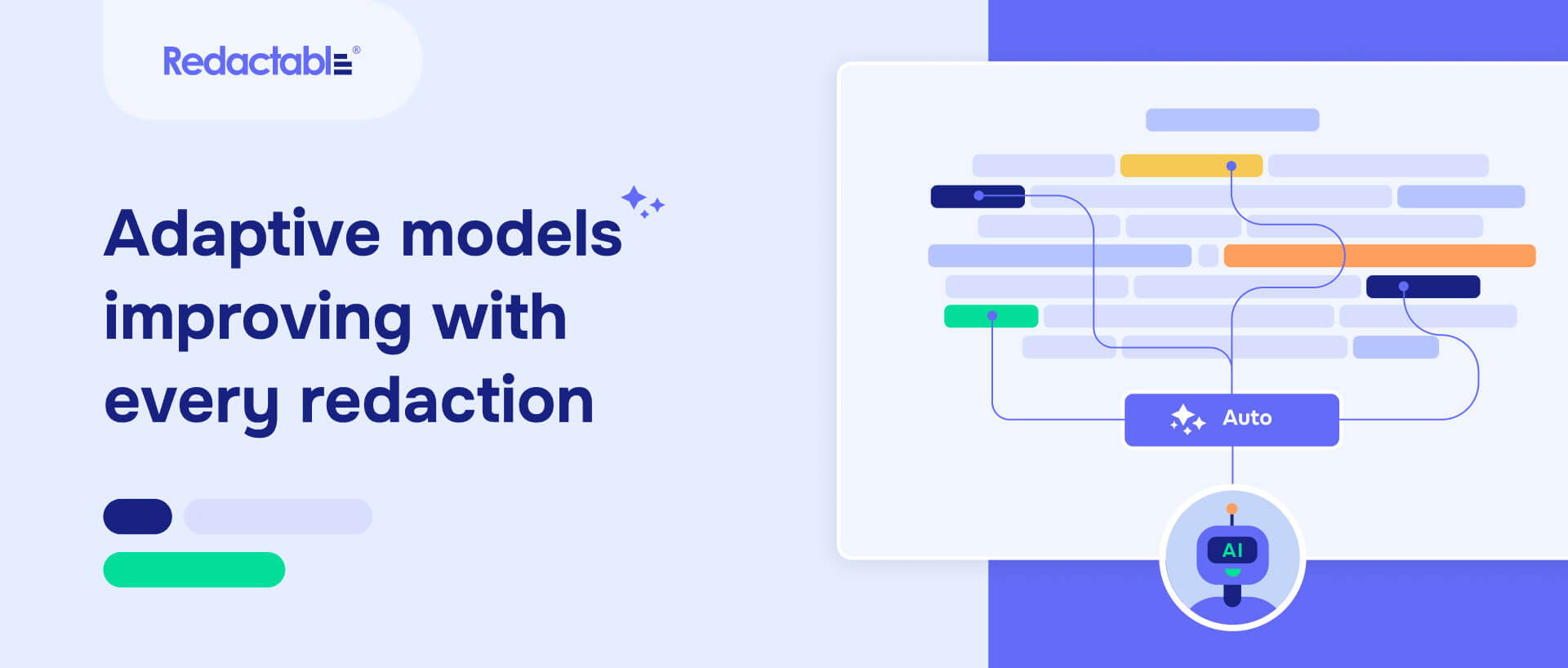
Redactable is already advancing toward that vision, developing adaptive redaction models that learn from feedback, handle multimodal data, and integrate directly with EHR and imaging systems. As AI adoption grows, so too does the imperative for trust - and redaction is where that trust begins.
Building the foundation for responsible medical AI
In the age of AI‑driven healthcare, data privacy and innovation no longer compete - they coexist. Redaction is the mechanism that makes it possible. By combining AI automation with robust compliance controls, Redactable is transforming how organizations share and learn from medical data safely. For health systems and research institutions seeking to scale AI responsibly, redaction isn’t optional - it’s foundational.


